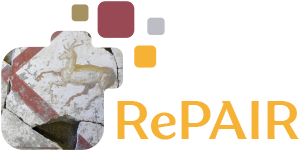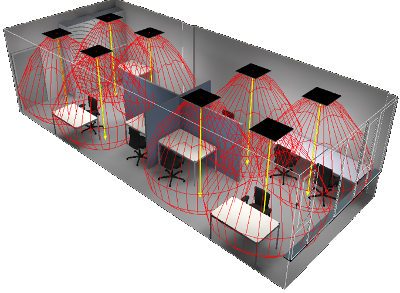
MEMories and EXperiences for inclusive digital storytelling
H2020 RIA (Coordinator)
Abstract: The MEMEX project promotes social cohesion through collaborative, heritage-related tools that provide inclusive access to tangible and intangible cultural heritage and, at the same time, facilitate encounters, discussions and interactions between communities at risk of social exclusion. These tools will empower communities of people with the possibility of welding together their fragmented experiences and memories into compelling and geolocalised storylines using new personalised digital content linked to the pre-existent European Cultural Heritage (CH). The tools of MEMEX will allow the communities to tell their stories and to claim their rights and equal participation in the European society. To this end, MEMEX will nurture actions that contribute to, rather than undermine, practices of recognition of differences by giving voice to individuals for promoting cultural diversity.

Reconstructing the Past: Artificial Intelligence and Robotics Meet Cultural Heritag
H2020 EXCELLENT SCIENCE FET (Participant)
Abstract: The physical reconstruction of shattered artworks is one of the most labour-intensive steps in archaeological research. Dug out from excavation sites are countless ancient artefacts, such as vases, amphoras and frescoes, that are damaged. The EU-funded RePAIR project will facilitate the reconstruction process to bring ancient artworks back to life. Specifically, it will develop an intelligent robotic system that can autonomously process, match and physically assemble large fractured artefacts in a fraction of the time required by humans. This new system will be tested on iconic case studies from the UNESCO World Heritage Site of Pompeii. It will restore two world-renowned frescoes, which are in thousands of broken pieces and currently in storerooms.
PAVIS will research new computer vision methodologies for automatic 3D scanning and pose estiamtion of the pieces for the tasks of 3D puzzle solving.

Time-lapse understanding of the static and human scene and its lighting
H2020-EU.1.3.1 (Participant)
Abstract: SCENEUNDERLIGHT leverages the privileged role of Europe in photonics as well as in smart lighting technologies. We propose 1. training of early stage researchers, who would become future experts in computer vision and lighting technologies, 2. first-class research, to push the state-of-the-art of computer vision and to drive the changes of lighting technologies, and 3. new disruptive products in smart lighting to accelerate the technological transfer from academia to industry. The proposed program will make efforts on systems for energy saving, towards a more sustainable greener Europe. We plan to implement this directive by smart lighting, defining new disruptive light management system technologies. Our planned demonstrator will take long-term time-lapse top-view images of the environment, understanding it by means of computer vision algorithms and controlling lights, for optimal lighting and energy saving. This will proceed via estimating the scene illumination properties (3D structure, material of objects and light source positions) and its use, with respect to the activities of the people. Finally, all research results will converge into the creation of an “invisible light switch”: users moving within an environment (e.g. warehouse with multiple aisles) will have the feeling that all of it is lit (e.g. switching lights on in an aisle just before the person turns into it), while the system will actually manage lighting to save energy, switching off those which the user cannot see, as for an “energy saving in the invisible”.

Retina-inspired ENcoding for advanced VISION tasks
FP7 FET (Participant)
Abstract: The retina is a sophisticated distributed processing unit of the central nervous system encoding visual stimuli in a highly parallel, adaptive and computationally efficient way. Recent studies show that rather than being a simple spatiotemporal filter that encodes visual information, the retina performs sophisticated non-linear computations extracting specific spatio-temporal stimulus features in a highly selective manner (e.g. motion selectivity). Understanding the neurobiological principles beyond retinal functionality is essential to develop successful artificial computer vision architectures. RENVISION's goal is, therefore, twofold: to achieve a comprehensive understanding of how the retina encodes visual information through the different cellular layers; to use such insights to develop a retina-inspired computational approach to high-level computer vision tasks. To this aim, exploiting the recent advances in high-resolution light microscopy 3D imaging and high-density multielectrode array technologies, RENVISION will be in an unprecedented position to investigate pan-retinal signal processing at high spatio-temporal resolution, integrating these two technologies in a novel experimental setup. This will allow for simultaneous recording from the entire population of ganglion cells and functional imaging of inner retinal layers at near-cellular resolution, combined with 3D structural imaging of the whole inner retina. The combined analysis of these complex datasets will require the development of novel multimodal analysis methods. Resting on these neuroscientific and computational grounds, RENVISION will generate new knowledge on retinal processing. It will provide advanced pattern recognition and machine learning technologies to ICTs by shedding a new light on how the output of retinal processing (natural or modelled) allows solving complex vision tasks such as automated scene categorization and human action recognition.